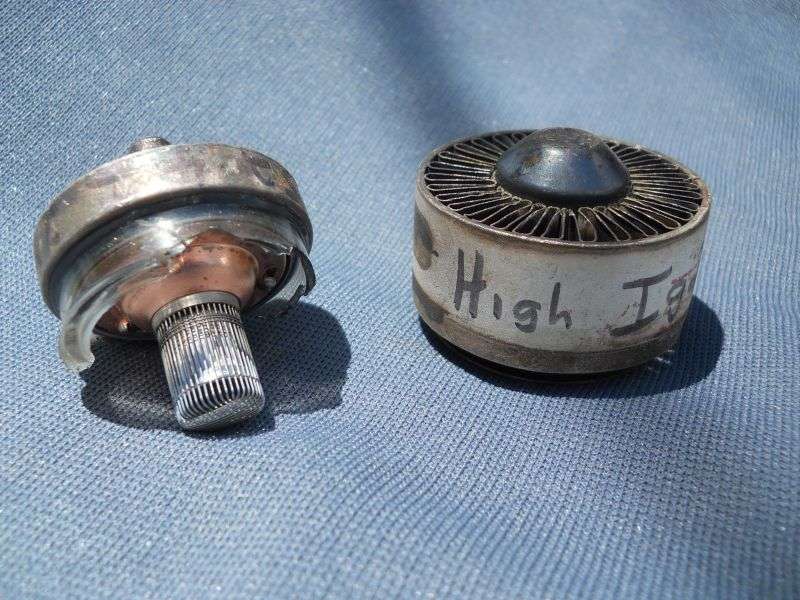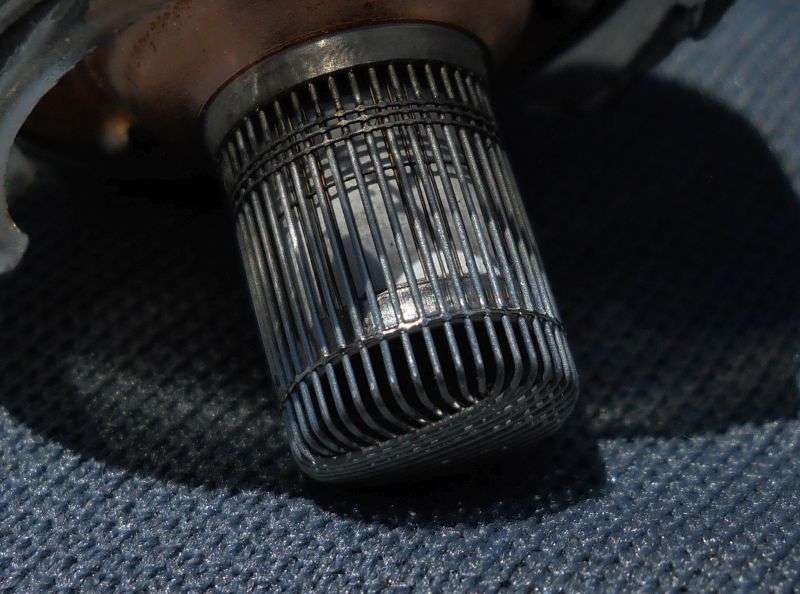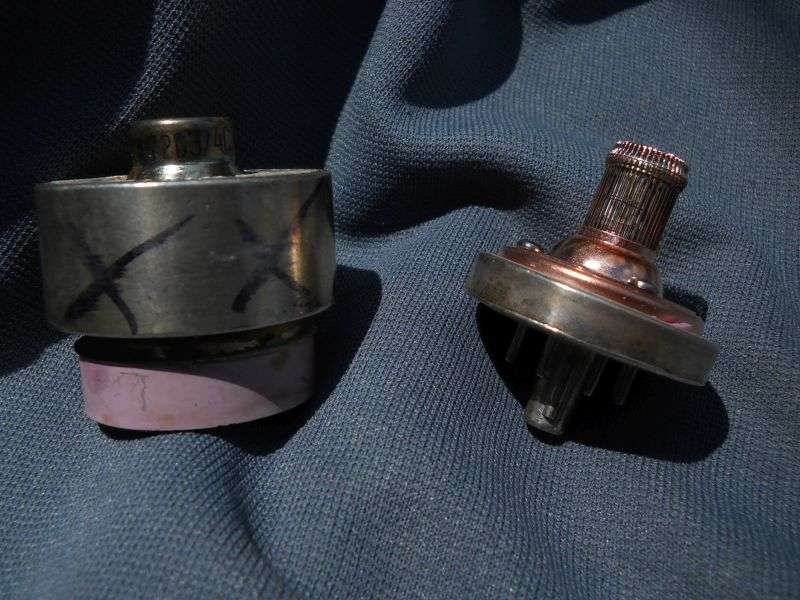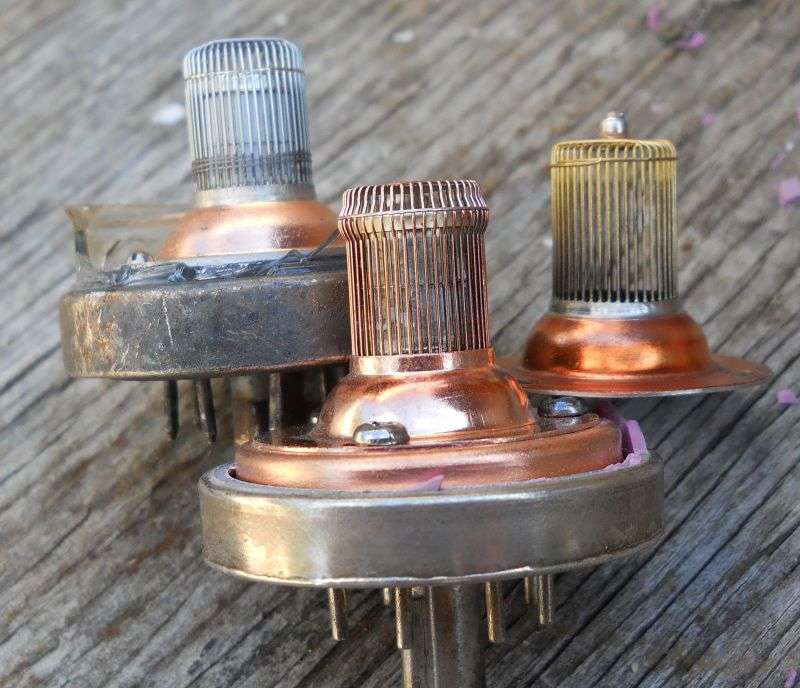So what's inside a 4CX250B, Mr. Bones?
Is this a trick question? There's a vacuum inside there, right?
Sure, and some other stuff. This tube is different from those built with a glass envelope to, er "hold in" the vacuum. More like hold out the atmosphere. The anode is visible through the glass, surrounding the other elements inside.
This tube has a copper anode (*NOT* steel, mind you) that serves as the vacuum container. The vacuum is inside the anode structure, and stuff to increase surface area is bonded to the outside surface, like the wavy fins in an auto radiator.
Crack open a dud, and you'll see this.
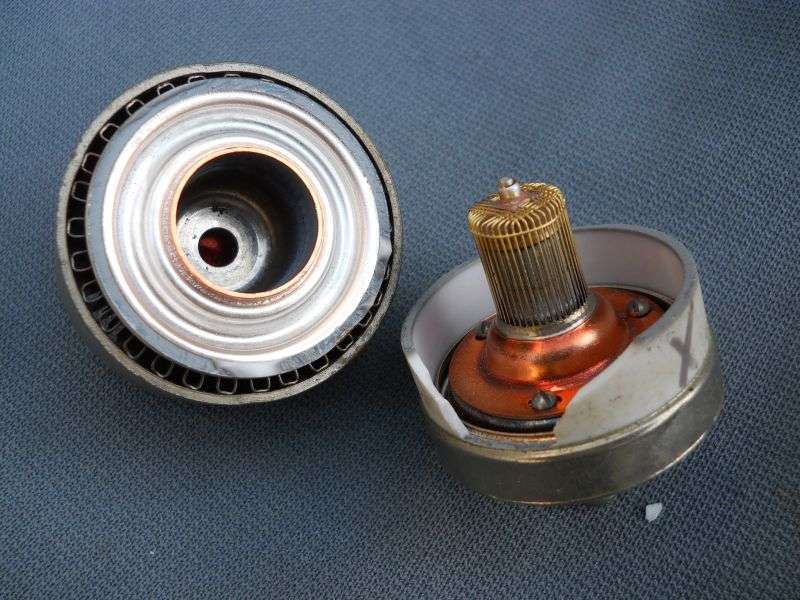
Crack open a perfectly-good tube and someone will probably want to wring your neck. The cylindrical fence structure is the screen grid. The wires are in fact gold plated. This is done because all metals do not spew electrons into a vacuum with the same level of enthusiasm. Naturally you want the cathode to spew as many electrons as possible. It's made of (I think) zirconium oxide, a substance that does this better than any kind of hot metal.
But a grid is supposed to control the flow of electrons squeezing through the space between grid wires, not spew them itself. Gold is at the opposite end of the "electrons per square inch" scale for what hot metal does in a vacuum. If this grid were to start spewing electrons, it would cease to control the tube's current and would cause it to pull all the current available, until something goes "POP!". The textbook name for this downhill-snowball effect is "secondary emission". All we want is the primary emission from the cathode, not from the other elements.
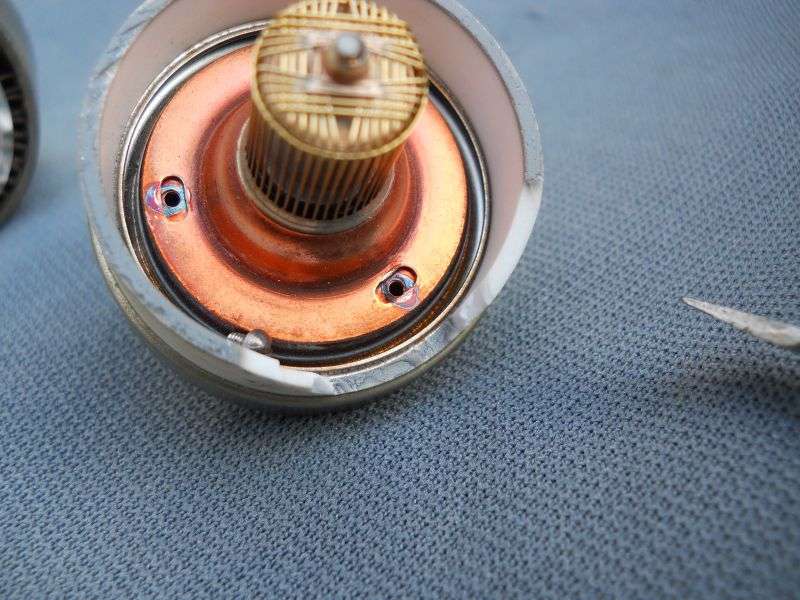
The screen grid is mounted on a ring with slotted mounting holes for the three retaining screws. This allows a proper lineup, with each screen-grid wire in the "electron shadow" of each control-grid wire. Grid wires will inevitably block some of your precious electron flow, so this keeps it at a minimum.
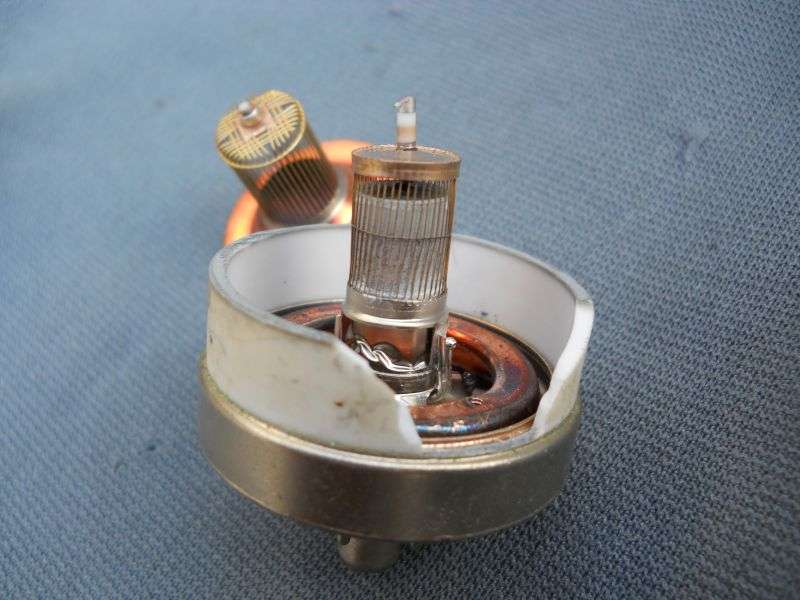
The control grid is inside the screen grid. The wires used to be straight. Got a little distorted as I pulled off the screen grid.
The inside surface of the anode always seems to look crusty when I look in there.
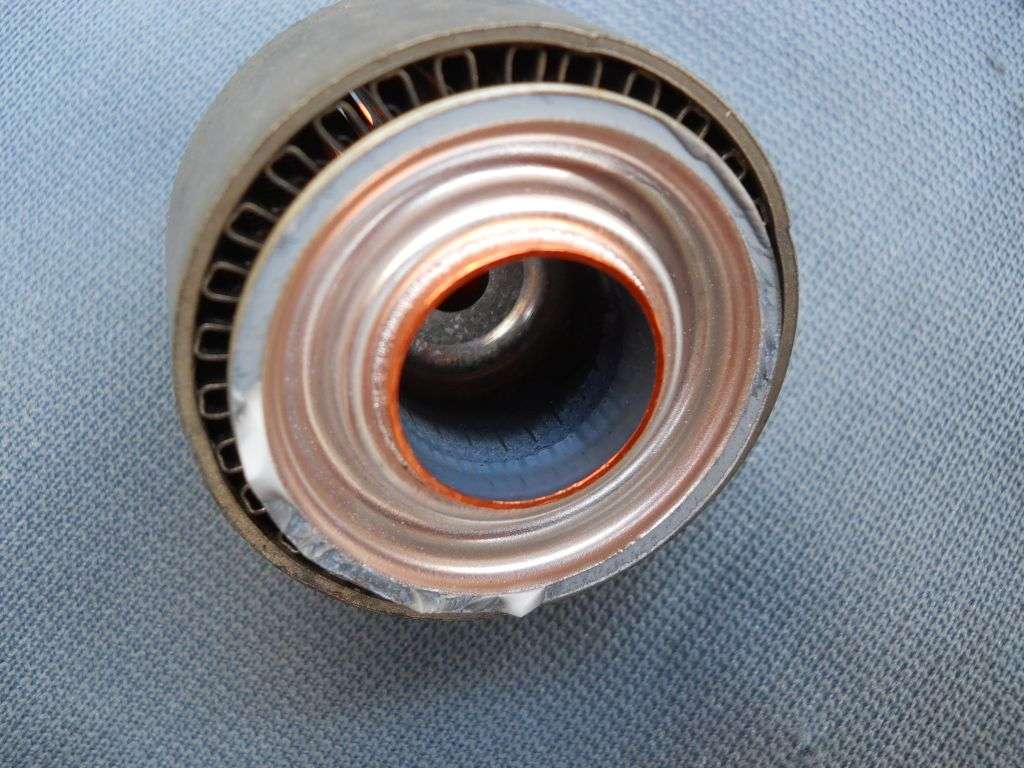
I'm told that the shiny copper surface inside will chemically bond any stray gas molecules that build up or leak into the tube over the decades. This is called "active gettering" and requires you run the tube hot enough to activate this chemistry. I'm no metallurgist, but this story sounds plausible to me. Don't know just what else would explain it.
I decided that cutting deeper into the tube wouldn't reveal a lot so I stopped there.
So now maybe you'll be less tempted to crack open a perfectly good tube to see what's in there.
And no, it's not a "steel tube". Get out your magnet and prove it to yourself.
73
Is this a trick question? There's a vacuum inside there, right?
Sure, and some other stuff. This tube is different from those built with a glass envelope to, er "hold in" the vacuum. More like hold out the atmosphere. The anode is visible through the glass, surrounding the other elements inside.
This tube has a copper anode (*NOT* steel, mind you) that serves as the vacuum container. The vacuum is inside the anode structure, and stuff to increase surface area is bonded to the outside surface, like the wavy fins in an auto radiator.
Crack open a dud, and you'll see this.

Crack open a perfectly-good tube and someone will probably want to wring your neck. The cylindrical fence structure is the screen grid. The wires are in fact gold plated. This is done because all metals do not spew electrons into a vacuum with the same level of enthusiasm. Naturally you want the cathode to spew as many electrons as possible. It's made of (I think) zirconium oxide, a substance that does this better than any kind of hot metal.
But a grid is supposed to control the flow of electrons squeezing through the space between grid wires, not spew them itself. Gold is at the opposite end of the "electrons per square inch" scale for what hot metal does in a vacuum. If this grid were to start spewing electrons, it would cease to control the tube's current and would cause it to pull all the current available, until something goes "POP!". The textbook name for this downhill-snowball effect is "secondary emission". All we want is the primary emission from the cathode, not from the other elements.

The screen grid is mounted on a ring with slotted mounting holes for the three retaining screws. This allows a proper lineup, with each screen-grid wire in the "electron shadow" of each control-grid wire. Grid wires will inevitably block some of your precious electron flow, so this keeps it at a minimum.

The control grid is inside the screen grid. The wires used to be straight. Got a little distorted as I pulled off the screen grid.
The inside surface of the anode always seems to look crusty when I look in there.

I'm told that the shiny copper surface inside will chemically bond any stray gas molecules that build up or leak into the tube over the decades. This is called "active gettering" and requires you run the tube hot enough to activate this chemistry. I'm no metallurgist, but this story sounds plausible to me. Don't know just what else would explain it.
I decided that cutting deeper into the tube wouldn't reveal a lot so I stopped there.
So now maybe you'll be less tempted to crack open a perfectly good tube to see what's in there.
And no, it's not a "steel tube". Get out your magnet and prove it to yourself.
73

